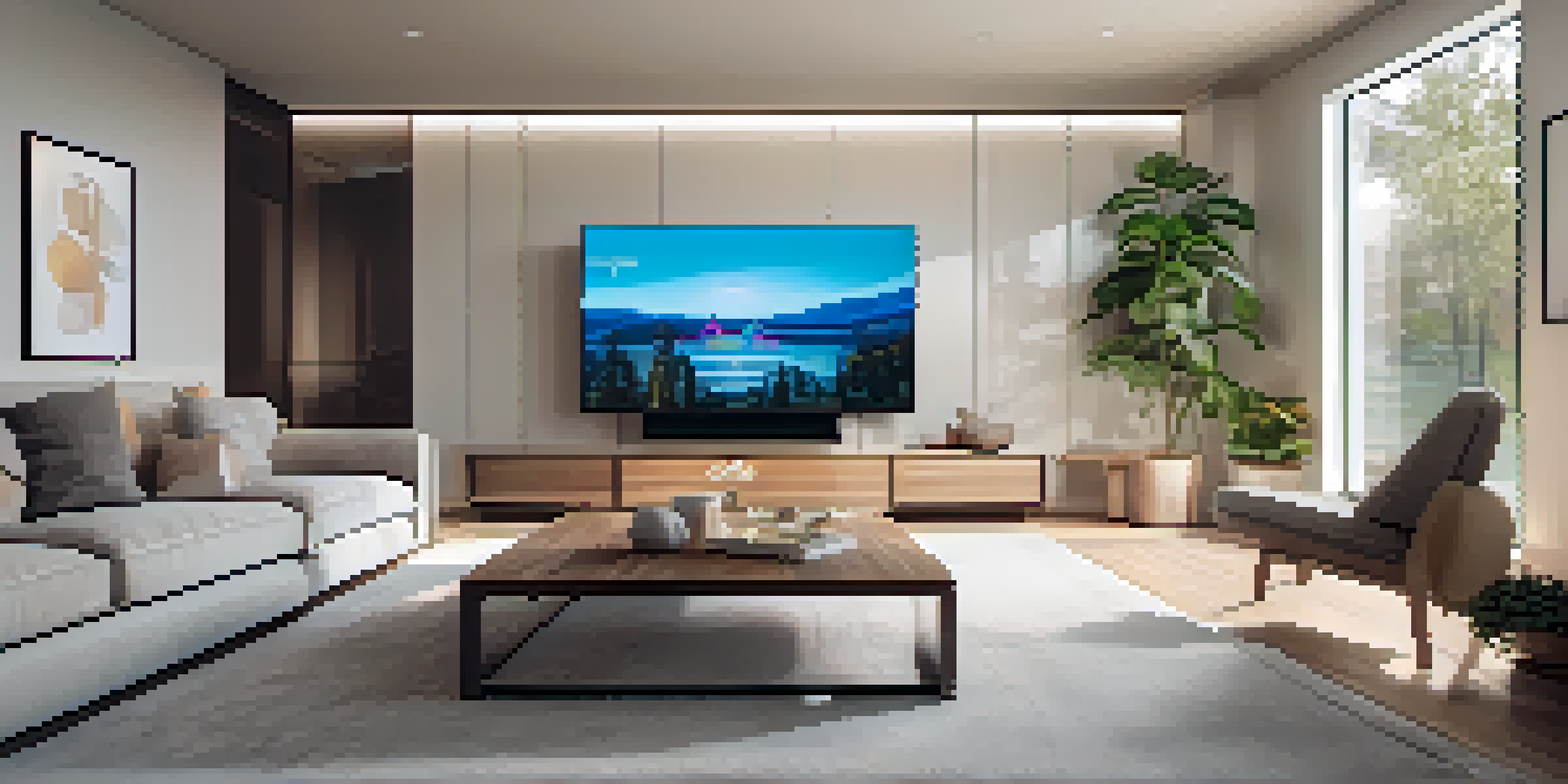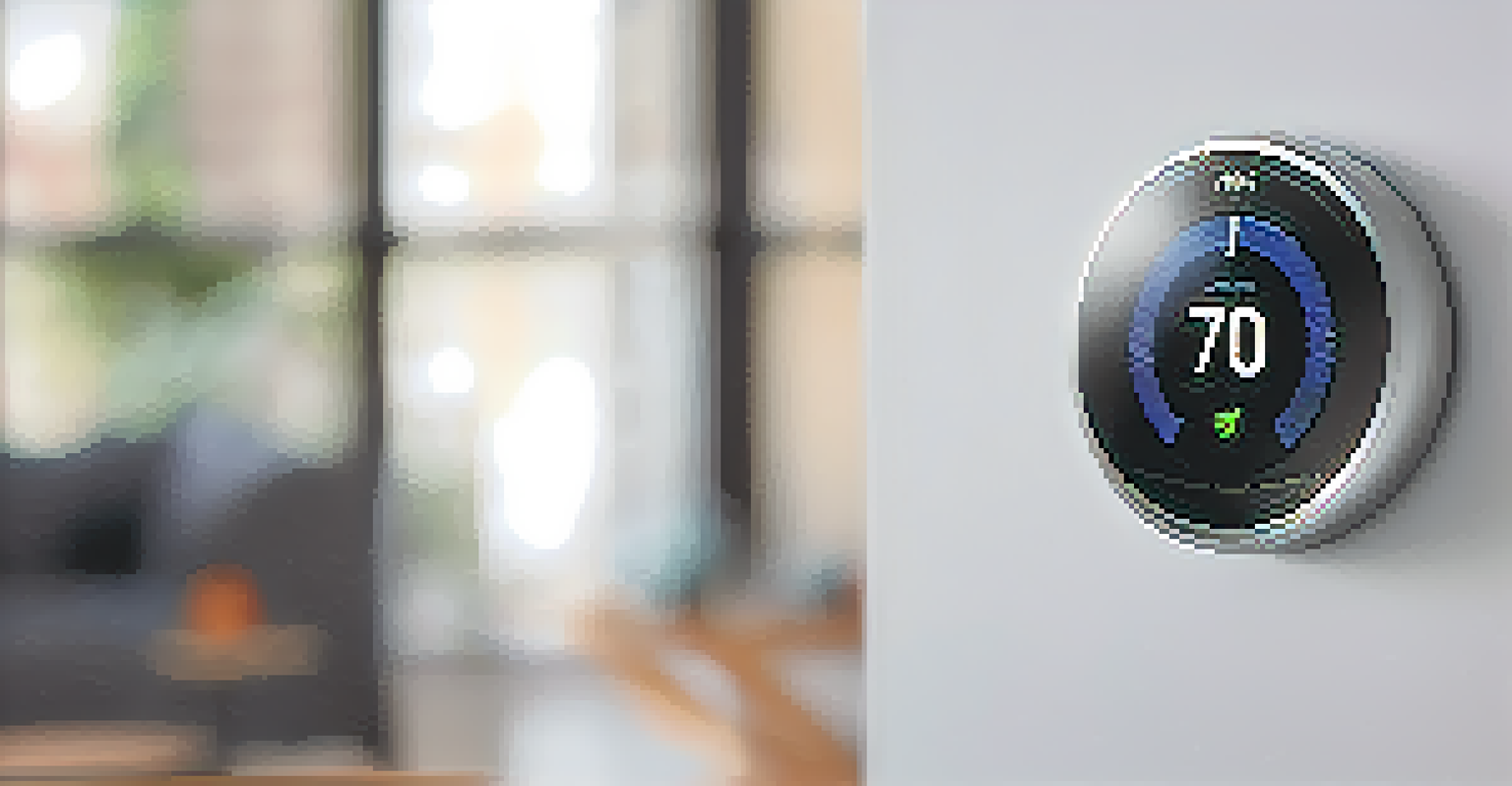Home Automation Basics: What You Need to Know

Understanding Home Automation: A Simple Overview
Home automation refers to the use of technology to control household systems remotely. Imagine being able to manage your lights, thermostat, and security cameras from your smartphone, even when you're miles away. This convenience not only improves your lifestyle but can also lead to energy savings and enhanced security.
The future is already here — it's just not very evenly distributed.
At its core, home automation integrates various devices through a central hub or app. This allows for seamless communication between devices, enabling them to work together efficiently. For instance, you can set your lights to turn on automatically when you arrive home, creating a warm and welcoming atmosphere.
In recent years, the rise of smart home devices has made automation accessible to everyone. With options ranging from smart bulbs to advanced security systems, you can tailor your home automation setup to fit your needs. The best part? You don't need to be a tech expert to get started.
Benefits of Home Automation: Why You Should Consider It
One of the major benefits of home automation is convenience. With just a few taps on your smartphone, you can control multiple devices from anywhere. Whether you want to adjust your thermostat while at work or check the security cameras while on vacation, automation puts you in control.

Energy efficiency is another significant advantage. Smart devices can optimize their usage based on your patterns, helping you save on utility bills. For instance, smart thermostats learn your schedule and adjust temperatures accordingly, ensuring comfort without wasting energy.
Home Automation Enhances Convenience
Home automation allows you to control devices like lights and thermostats from your smartphone, making daily life easier.
Lastly, enhanced security is a compelling reason to consider home automation. With smart locks, cameras, and motion sensors, you can monitor your property in real-time. Notifications sent directly to your phone keep you informed of any unusual activity, giving you peace of mind.
Key Components of a Smart Home Automation System
To create a successful home automation setup, you'll need a few key components. First, a reliable central hub or smart speaker acts as the brain of your system, connecting various devices. Popular options include Amazon Echo or Google Nest, which allow you to control everything with voice commands.
Technology is best when it brings people together.
Next, select smart devices that suit your lifestyle. Common choices include smart lights, thermostats, security cameras, and smart plugs. Each of these devices can be controlled remotely, creating a cohesive and efficient home environment.
Lastly, ensure your Wi-Fi network is strong and secure, as most smart devices rely on internet connectivity. A robust network means your devices will communicate effectively, providing a seamless experience. Consider using a mesh network if you have a larger home to eliminate dead zones.
Popular Smart Devices to Start Your Automation Journey
When diving into home automation, certain devices stand out as must-haves. For instance, smart lights like Philips Hue allow you to change the ambiance of your home with a simple app. You can set schedules, dim lights, or even change colors to match your mood.
Another popular choice is the smart thermostat, such as the Nest Learning Thermostat. This device learns your preferences and automatically adjusts temperatures, ensuring comfort while saving energy. Plus, you can control it from your phone, making it perfect for busy schedules.
Smart Devices Boost Energy Efficiency
Devices such as smart thermostats learn your habits to optimize energy use, helping you save on utility bills.
Don’t overlook smart security devices, like Ring doorbells or Arlo cameras. These devices provide real-time monitoring and alerts, helping you keep your home safe. With features like night vision and two-way audio, you can see and communicate with visitors, no matter where you are.
Integrating Voice Assistants into Your Smart Home
Voice assistants like Amazon Alexa and Google Assistant have revolutionized home automation. With these assistants, you can control your smart devices using simple voice commands, making it easier than ever to manage your home. Imagine walking in and saying, 'Turn on the lights,' while your hands are full.
Integration with voice assistants is typically straightforward. Most smart devices come with apps that allow you to connect them to your chosen assistant. Once linked, you can create routines, such as saying 'Goodnight' to turn off all lights and lock the doors simultaneously.
Using voice commands also enhances accessibility for those who may have difficulty using traditional controls. This inclusivity is an essential aspect of home automation, ensuring everyone can enjoy the benefits of a smart home.
Security Considerations in Home Automation
While home automation offers many conveniences, security should always be a priority. As more devices connect to your home network, the potential for vulnerabilities increases. It's crucial to choose devices with robust security features, like encryption and regular software updates.
Always change default passwords on your devices and use strong, unique passwords for your network and accounts. Consider enabling two-factor authentication where possible for an added layer of protection. These steps can significantly reduce the risk of unauthorized access.
Security is Key in Automation Systems
Prioritizing security features in smart devices is essential to protect your home network from vulnerabilities.
Additionally, be cautious about the information you share with smart devices. Many devices collect data to enhance functionality, but it’s essential to review privacy settings and understand how your data is being used. Staying informed empowers you to enjoy the benefits of automation while keeping your home secure.
Future Trends in Home Automation: What to Expect
The landscape of home automation is constantly evolving, with exciting trends on the horizon. One notable trend is the rise of artificial intelligence (AI) in smart devices. This technology allows devices to learn from user behavior and automate tasks more intuitively, creating a truly smart home experience.
Another trend is the growing emphasis on energy efficiency and sustainability. As more homeowners become environmentally conscious, smart devices are incorporating features that help reduce energy consumption. For instance, solar-powered devices and smart irrigation systems are paving the way for greener living.

Finally, interoperability among devices is becoming increasingly important. The push for standard protocols means that different brands will work together seamlessly. This development will simplify the user experience, allowing homeowners to mix and match devices without compatibility issues.